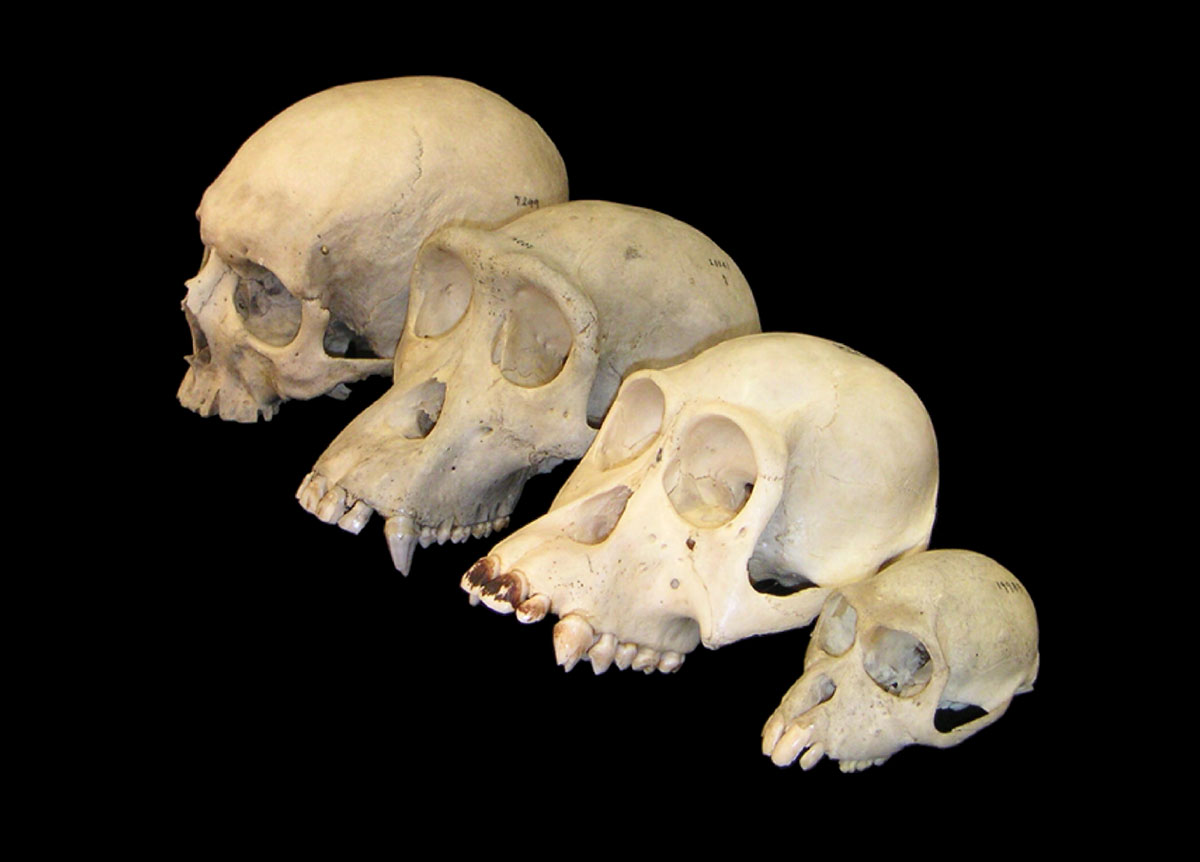Humans are Primates

Extant Primate Skulls. Average brain weight (left to right): human 1350g; chimpanzee 400g; orangutan 400g; and macaque 100g.
Humans are a type of mammal, specifically, humans are a type of primate. Primates are distinguished from other mammals by a unique combination of physical and behavioral characteristics. Physical characteristics include a generalized limb structure that allows for a variety of locomotor patterns, although most primates are quadrupedal to some degree. In addition, primates feature grasping hands and feet with nails, rather than claws, on most or all of the ends of their digits. Most primates also have opposable thumbs. Primates also feature a generalized skull with generalized dentition along with an increase in the sense of vision and a decrease in the sense of smell.
Behavioral characteristics include preferential use of the hands to explore, rather than use of the nose and sense of smell. Primates also have an enhanced sense of touch. They give birth to fewer offspring and invest more time in rearing them than many other mammals. Primates also have more efficient fetal nourishment, longer gestation periods, and an extended life span. Due to an increased relative brain size, especially the parts associated with learning, primates also have a greater dependency on learned behavior. Most primates live in long-lasting groups with all ages and both sexes, and are very social animals.
Read more Australian Museum's Humans are Primates

